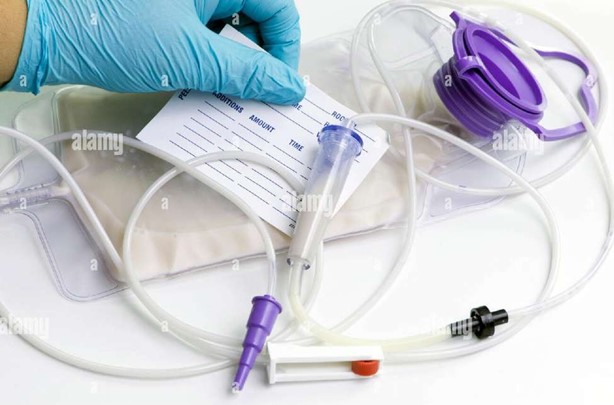A nurse on a postpartum unit is caring for a group of clients. Which of the following clients is the nurse’s priority?
A client who is 2 days postpartum and whose fundus is 2 to 4 cm below the umbilicus.
A client who is 3 days postpartum and has not had a bowel movement since prior to admission.
A client who is 4 days postpartum and has lochia serosa.
A client who is 1 day postpartum and has not voided in 8 hr.
The Correct Answer is D
A client who is 1 day postpartum and has not voided in 8 hr. This client is at risk of urinary retention, bladder distension, and infection due to the effects of epidural anesthesia, perineal trauma, and fluid shifts after delivery. The nurse should assess the client’s bladder and catheterize if necessary.
Choice A is wrong because a client who is 2 days postpartum and whose fundus is 2 to 4 cm below the umbilicus is showing a normal finding.
The fundus should descend about 1 to 2 cm per day after delivery and be nonpalpable by day 10.
Choice B is wrong because a client who is 3 days postpartum and has not had a bowel movement since prior to admission is not uncommon.
Constipation is a common problem after delivery due to decreased peristalsis, dehydration, and fear of pain.
The nurse should encourage fluid intake, fiber intake, and early ambulation to promote bowel function.
Choice C is wrong because a client who is 4 days postpartum and has lochia serosa is also showing a normal finding.
Lochia serosa is the pinkish-brown discharge that occurs from day 4 to 10 after delivery.
It consists of old blood, serum, leukocytes, and tissue debris.
Nursing Test Bank
Naxlex Comprehensive Predictor Exams
Related Questions
Correct Answer is D
Explanation

This action indicates that the charge nurse should intervene because adding food coloring to the tube feeding is not recommended and can cause adverse effects such as aspiration, diarrhea, and allergic reactions.
Choice A is wrong because checking the volume of the aspirate is a correct action to assess gastric residual volume and prevent complications such as nausea, vomiting, and aspiration.
Choice B is wrong because checking the pH of the aspirate is a correct action to verify the placement of the NG tube and prevent accidental administration of enteral feeding into the lungs.
Choice C is wrong because administering 15 mL of water before administering the feeding is a correct action to flush the NG tube and prevent clogging.
Normal ranges for gastric residual volume are less than 250 mL for adults and less than 5 mL/kg for children. Normal ranges for pH of gastric aspirate are less than 5.5 for adults and less than 4 for children.
Correct Answer is A
Explanation
Keep your environment well ventilated. This can help reduce nausea and vomiting by eliminating odors that might trigger them.
Some additional explanations are:
Choice B is wrong because eating three large meals each day can increase nausea and vomiting by overloading the stomach. It is better to eat small, frequent meals and avoid spicy, greasy, or strong-smelling foods.
Choice C is wrong because restricting intake of high-carbohydrate foods can lead to ketosis, which can worsen nausea and vomiting. High-carbohydrate foods can also help settle the stomach and provide energy.
Choice D is wrong because brushing your teeth immediately after eating can stimulate the gag reflex and cause nausea and vomiting. It is better to rinse your mouth with water or mouthwash after eating and brush your teeth at least an hour later.
Normal ranges for nausea and vomiting in pregnancy are:
- Nausea and vomiting usually start around 6 weeks of gestation and peak around 9 weeks. They usually subside by 16 to 20 weeks, but some women may experience them throughout pregnancy.
- Nausea and vomiting are considered mild if they do not interfere with daily activities or nutrition. They are considered moderate if they cause some difficulty with daily activities or nutrition. They are considered severe if they prevent adequate intake of fluids and nutrients, cause weight loss, dehydration, electrolyte imbalance, or ketonuria.
- Nausea and vomiting that are severe or persist beyond 20 weeks of gestation may indicate a complication such as hyperemesis gravidarum, molar pregnancy, multiple gestation, or infection.
Whether you are a student looking to ace your exams or a practicing nurse seeking to enhance your expertise , our nursing education contents will empower you with the confidence and competence to make a difference in the lives of patients and become a respected leader in the healthcare field.
Visit Naxlex, invest in your future and unlock endless possibilities with our unparalleled nursing education contents today
Report Wrong Answer on the Current Question
Do you disagree with the answer? If yes, what is your expected answer? Explain.
Kindly be descriptive with the issue you are facing.
